Women may have been restricted from entering Jama Masjid for non-prayer activities due to a recent decision by the committee of the Mughal-era mosque that was seemingly miffed by those making social media videos, but there is no denying the contribution of women in many mosques across the country.
Even in the Capital, some of the old iconic mosques have been built – rather commissioned to be built — by women. Patriot takes you through some of these iconic monuments.
Mubarak Begum Masjid (Randi Ki Masjid)
Lying among tall buildings, shops of machine parts as well as clusters of electric wires running from one pole to another, the double-storeyed Mubarak Begum Masjid – also known as Randi ki Masjid (courtesan’s mosque) – serves as a reminder to a more peaceful and simpler time. The honking of vehicles and the shouting of vendors and labourers on the street that faces the mosque and runs from Hauz Qazi to Lal Kuan comprise the hustle-bustle of old Delhi. The mosque, however, reminds one of a different era.
The upper floor consists of a prayer chamber and the ground floor has toilets. The central one of the three red-and-white striped domes, which collapsed in 2020, is covered by black canvas.
Below the domes, three arched entrances open to the prayer chamber. Men in the prayer chamber are offering the afternoon prayers while a woman sits behind the parapet around the stairs and gulps hot tea.
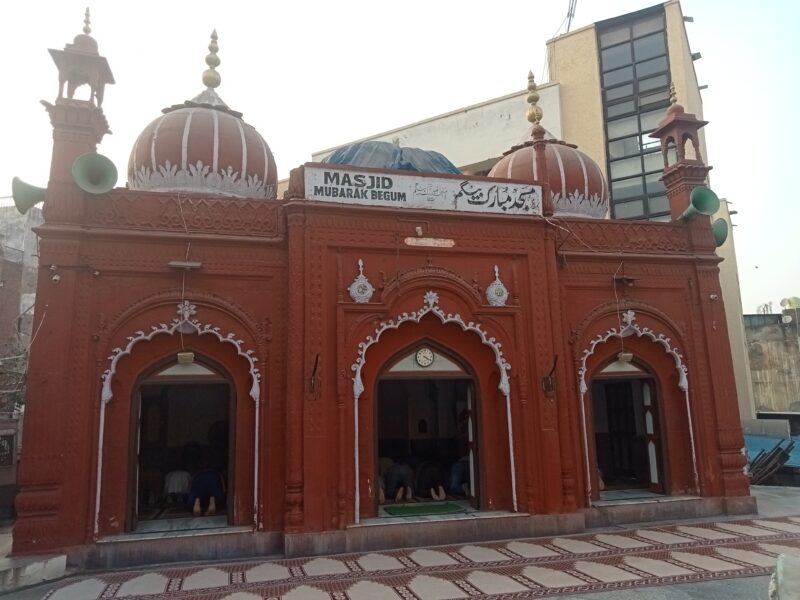
“A lot of people come here for the first time and say that they feel as if they have been here for years,” says the Imam of the mosque after the prayer, smiling in admiration. The imam has been looking after the mosque for the last 17 years.
The mosque was constructed in 1823 by Bibi Mahru Tun Mubarak-ul-Nisa Begum (Mubarak Begum), a nautch girl from Pune, who came from a Brahmin family and converted to Islam after she married General David Ochterlony, who was the British Resident in Delhi during the time of Emperor Akbar Shah II.
Ochterlony was a ‘white mughal’ who was known for his lavish lifestyle, his love for hookahs and mistresses. Mubarak Begum was one of the 13 wives of the British official. After the death of Ochterlony in 1825, Mubarak Begum married a Mughal nobleman who fought in the 1857 mutiny against the British.
According to Scottish scholar William Dalrymple, the Begum’s house was famous for Mughal culture where the Mughal prince Mirza Farhatullah Baig organised the last Urdu mushaira before the Mughal empire was overthrown by the British.
Due to the early profession of the Begum, the mosque is famously known as Randi Ki Masjid. The randis or courtesans, during the Mughal period, were highest in the order of women entertainers, who were skilled not only in dance, but also singing, conversation and poetry. It is said that young nawabs were sent to learn the art of conversation with randis. They were called city’s divas who were visited by the rich and powerful – who often shared with them the secret of the city and society.
Asked about how the mosque is perceived by the visitors and people in the area, the caretaker says: “The courtesans at that time were not as we understand them today. They were respectable and influential women. Many tourists come here and ask if the mosque was built by a prostitute. All of this is best left in history books. All I know is that whoever built, must have built it with good intention and halal (legitimate) money.”
People in the area were embarrassed by the infamous name of the mosque. When one asked them where Randi Ki Masjid was located, they chuckled and laughed, before hastily pointing at the Mubarak Begum Masjid.
During the Mughal era, so many Mughal princesses built mosques. In Bengal, mosques had side corridors with lattice walls for women.
– Ziya Us Salam, journalist and author of Women in Masjid
Sunehri Masjid
A couple of kilometres away from Mubarak Begum Masjid, stands a mosque built in 1747 by khwajasara (eunuch) Jawed Khan and emperor Ahmad Shah Bahadur’s mother Qudsiya Begum. It is located in a corner, just opposite the busy Nishad Raj Marg and Red Fort parking. This mosque is often confused with the Sunehri Masjid of Chandni Chowk, which was built a few decades earlier – in early 1720s – by a Mughal noble, Raushan-ud-Daulah, during the reign of Mughal emperor Mohammad Shah Rangila.
However, the one at the Red Fort is often called the Parking Waali Sunehri Masjid.
Qudsiya Begum, whose real name was Udham Bai, was introduced to the Mughal court as a nautch girl. In the court, she met Muhammad Shah Rangila who became fond of her and eventually married her. With time, she became influential in the court: even appointing the mansabdars (high rank holder such as civil or military officers) who would enforce the rule of the Emperor.
After the death of her husband, she served as a regent to her son Ahmad Shah Bahadur from 1748 to 1754. Known for her generosity and influence, Qudsia provided the Begums and the late emperor’s children with pensions using both her personal money and government finances.
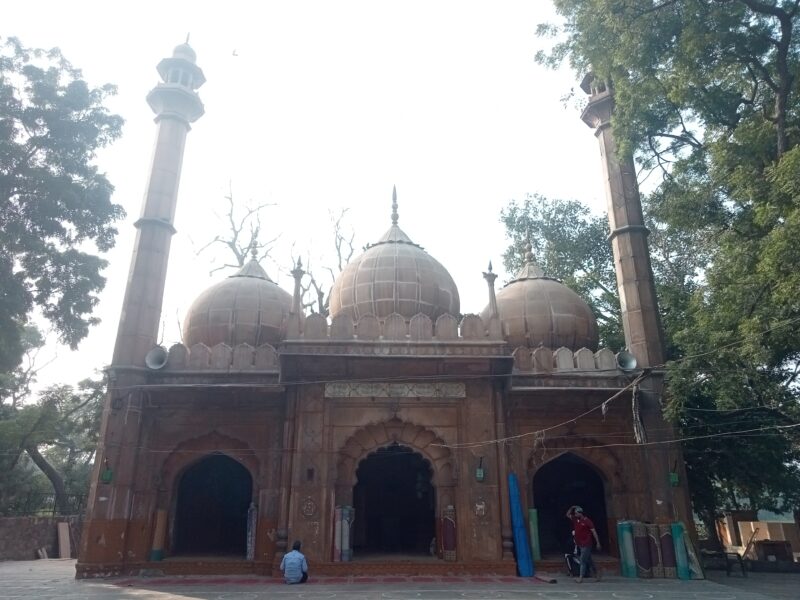
It is believed that Qudsia had an affair with Jawed Khan khwajasara, who was also the Darogha (police chief) under Mohammad Shah Rangila and a eunuch-superintendent of the zenana (women) quarters. This proximity between the two led to the construction of the Sunehri Masjid. It was built by the efforts of Jawed Khan and commissioned by Qudsiya Begum, as written on its epitaph:
‘sayi-e-nawab-bahadur sahib-e-lutf-o-karam
saakht tameer-e-haseen jawed aali dastgaah’
(By efforts of Nawab Bahadur, the bestower of rewards and grants,
Jawed of high reach and commands, was constructed this beautiful structure)
As expected, those who came for prayers were unaware of the history of the mosque despite an inscription outside the mosque. The grave of Qudsiya Begum lies in the backyard of the mosque.
Khairul Manazil Masjid
Situated just opposite to Purana Quila (Old Fort), the Khairul Manazil Masjid is often confused by the visitors to be a part of the Quila. Many tourists enter the mosque thinking they are visiting the monument and are surprised when the caretaker of the mosque asks them to remove their shoes as they move into the prayer chamber.
The confusion stands valid as the mosque is in complete ruins, just like the monument opposite to it. The hauz (ablution tank) is not functional and there is no electricity in the premises. The prayer chamber serves as a permanent abode for pigeons and the inscription on the walls is hard to make sense of.
There were many mosques built by women in regular spaces in the past. The bigger ones, such as Fatehpuri Masjid and Khairul Manazil mosque, stand as a testament to this.– Rana Safvi, author and historian
The three walls with small rooms – which were once part of the madrasah – also lie in dilapidated state. It is currently protected and maintained by the Archaeological Survey of India.
“We just offer prayers three times a day here, that is Asr (afternoon), Zuhr (midday) and Maghrib (sunset) – along with the Friday prayers. It is because the mosque is a heritage sight,” says the caretaker of the masjid.
Khairul Manazil, which literally translates to ‘best of houses’, has a numerical value that corresponds to the year of the construction of the building, 969 hijri as per Islamic calendar or 1561–1562 AD.
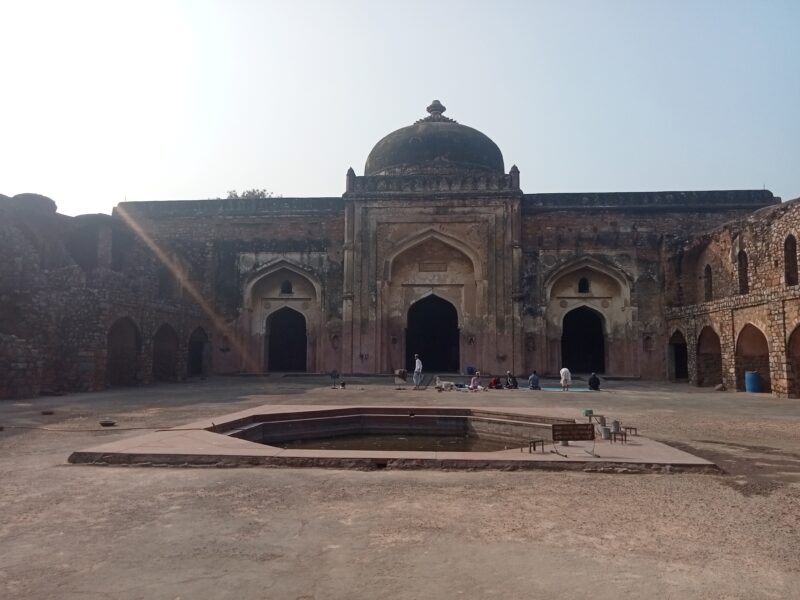
It was commissioned by Maham Anga, the wet-nurse of the Mughal emperor Akbar, and is believed to be the first mosque in Delhi commissioned by a woman. Anga served as the de facto regent and the young emperor’s political advisor. The inscription on the central arch of the mosque reads that Shihabuddin Ahmad Khan assisted in its erection.
The ASI attempted to ban Islamic prayers in the mosque in 1992 but without success.
Zeenat-ul-Masajid
Zeenat-ul-Masajid was built by Zeenat-un-Nisa, the second daughter of the Mughal emperor Aurangzeb, in 1700 AD. The mosque is famously known as Ghata Masjid, which may perhaps be derived from its proximity to a bank (ghat) of the river Yamuna back then or the tall minarets that touch the clouds (ghata).
While a mosque can be a place of prayer for men, it isn’t quite so for women. It is a place of dignity, safety, protection, and aid. A woman’s mosque, that which focuses on preserving all these things, is the solution to most of our problems.– Huda Ahsan, architect and independent researcher
The locals in the area dearly call the mosque Ghata Masjid and are unaware of its real name.
The part of Daryaganj, where the mosque is located, is also known by the name of Ghata because of the presence of the mosque.
The caretaker of the masjid says that the mosque is rarely visited by tourists and only attended by the men who come to pray. The Jama Masjid at opposite Urdu Bazaar, constructed by Zeenat-un-Nisa’s famed and adored grandfather, Shah Jahan, is thought to have served as an inspiration for the mosque.
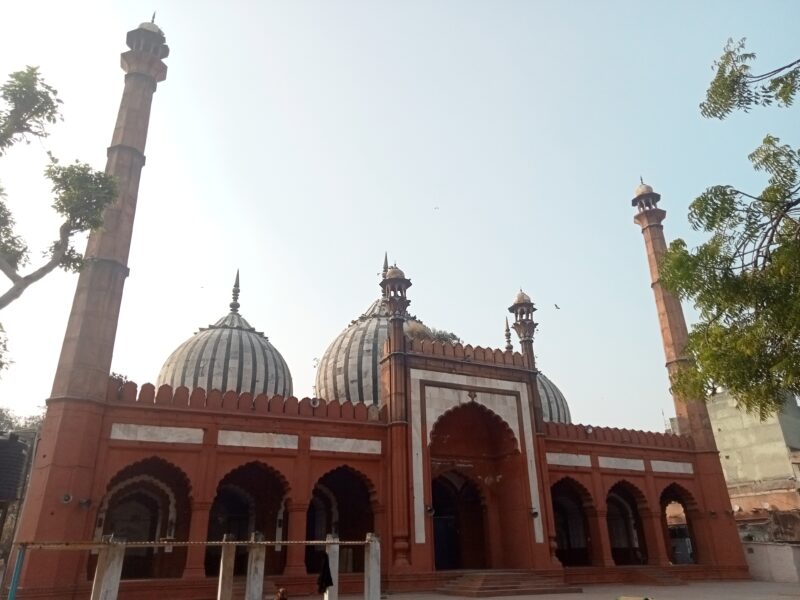
Like in many mosques in the Capital, the hauz (or ablution tank) is not functional but the mosque remains in good condition despite some signs of decay. The mosque is constructed on a plinth. It has three marble domes and seven arched entrances opening to the prayer chamber. Two towering minarets flank the mosque’s front and support an octagonal pavilion made of white marble. In the quaint campus of the mosque, there is no one present except the caretakers.
During the first war of independence, when the Mughal emperor in Delhi joined the uprising against the British in 1857, the mosque experienced some dark times. After the Mughals and the British sepoys lost the war, the mosque was first used by the British as a barrack and later converted into a bakery.
The grave of Zeenat-un-Nisa was also destroyed. However, on the southern corner of the mosque, a tomb for the princesses has been rebuilt as a memorial. The mosque is surrounded by plants of a variety of flowers, especially roses.
Fatehpuri Masjid
Of all the mosques Patriot visited, only Fatehpuri Masjid had visitors flocking in numbers. The hauz of the mosque is full with tap water – which in the past was fed with water directly from Yamuna – and tourists often sit by its side. The mosque is the second largest in Delhi after Jama Masjid and it was built in 1650 by Fatehpuri Begum, one of emperor Shah Jahan’s wives who was from Fatehpur Sikri.
“The number of visitors to this mosque are just a tad lesser in number than Jama Masjid,” said one of the caretakers of the mosque.
Surprisingly, one found as many women in the mosque as men.
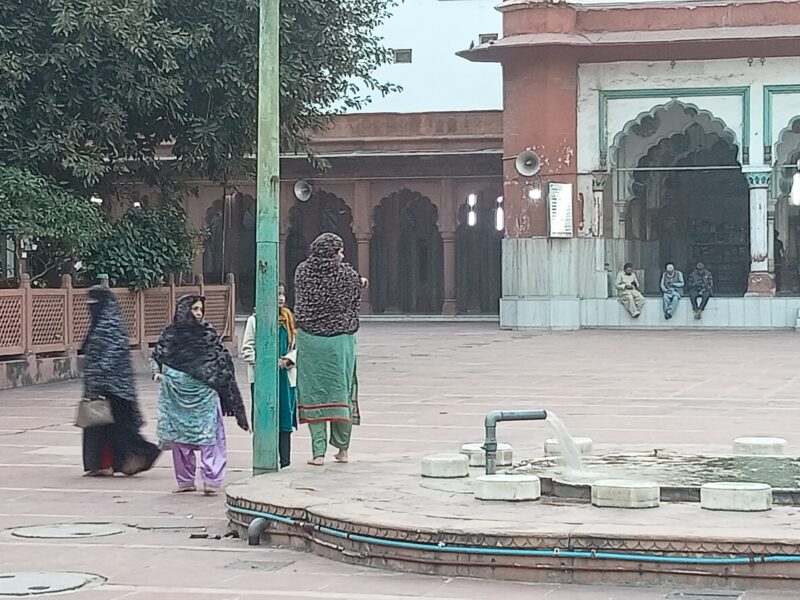
The mosque has a fluted dome made of red sandstone with a kalash (inverted lotus) on top.
The mosque has a conventional design with seven-arched entrances in the prayer hall and is surrounded by minarets. One of the minarets is under construction.
The Shahi Imam of the mosque attends visitors who come to tell him their dukh-takleef (complaints) and seek his blessings as well as medicines.
The room of the Imam is occupied mainly by women who had come to pay him a courtesy call and seek his blessings and prayers. Interestingly, the women sitting with the Imam were unaware that the mosque was built by a woman.
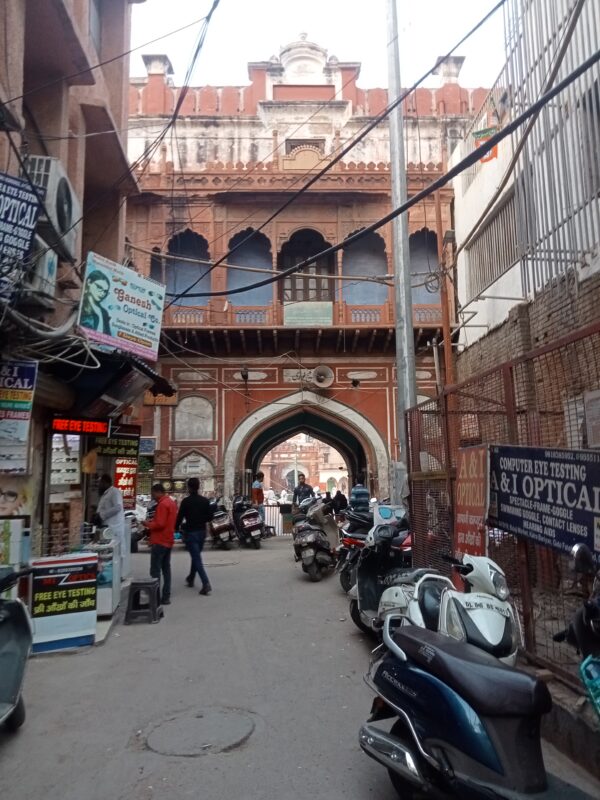
The mosque has three main gates, one of which opens to Chandni Chowk and the other two to Lal Kuan and Old Delhi Railway Station.
Follow us on:
Instagram: instagram.com/thepatriot_in/
Twitter: twitter.com/Patriot_Delhi
Facebook: facebook.com/Thepatriotnewsindia





